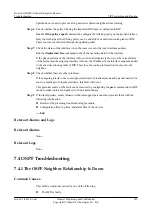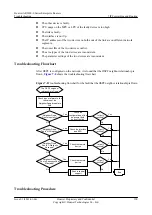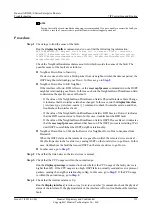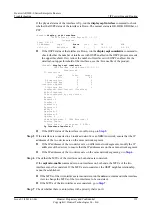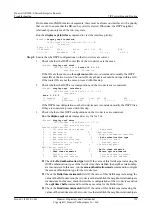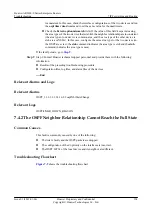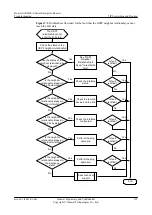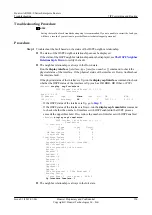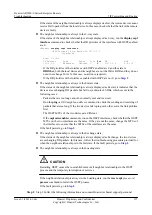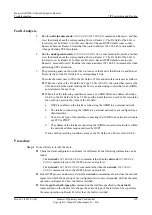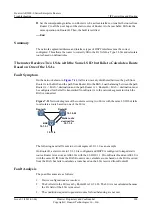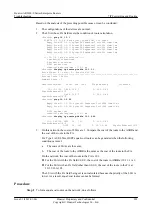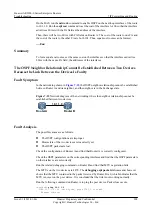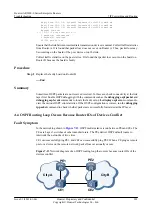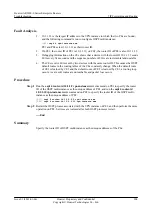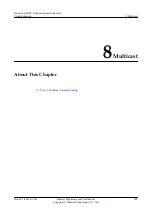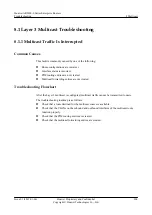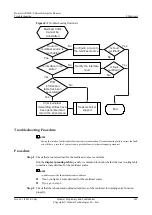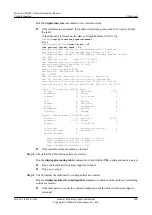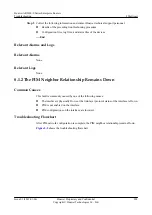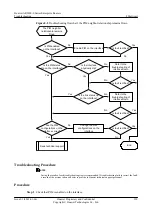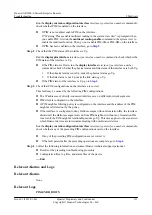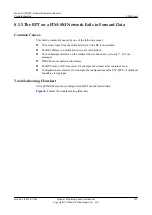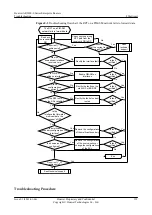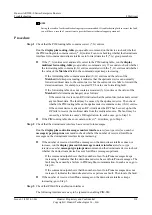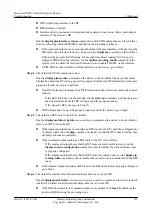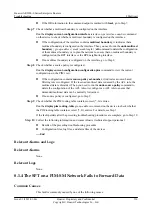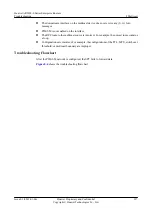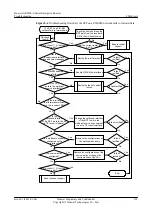
Reply from 10.1.1.0: bytes=56 Sequence=2 ttl=255 time=5 ms
Reply from 10.1.1.0: bytes=56 Sequence=3 ttl=255 time=5 ms
Reply from 10.1.1.0: bytes=56 Sequence=4 ttl=255 time=5 ms
Request time out
--- 10.1.1.0 ping statistics ---
5 packet(s) transmitted
3 packet(s) received
40.00% packet loss
Ensure that the link between intermediate transmission devices is normal. Collect traffic statistics
from Router A. It is found that packet loss does not occur on Router A. Thus, packet loss may
be occurring on the board of the peer device or on the link.
Collect traffic statistics on the peer device. It is found that packet loss occurs on the board on
Router B because the board is faulty
Procedure
Step 1
Replace the faulty board on Router B.
----End
Summary
Sometimes, OSPF packets are not received received. In this case, check connectivity at the link
layer first. Enable OSPF debugging with the commands such as the
debugging ospf packet
and
debugging ospf event
commands to locate the fault, or run the
display ospf error
command to
view the various OSPF error statistics. If the OSPF configuration is correct, run the
debugging
ip packet
command to check whether packets are successfully forwarded at the IP layer.
An OSPF Routing Loop Occurs Because Router IDs of Devices Conflict
Fault Symptom
In the networking shown in
, OSPF multi-instance is run between PEs and CEs. The
CEs are Layer 3 switches of other manufacturers. The PEs deliver OSPF default routes to
interwork the networks of two cities.
CE1 can successfully ping PE1, and CE2 can successfully ping PE2. When a CE pings a remote
peer or a device on the remote network, packet loss occasionally occurs.
Figure 7-13
Network diagram of an OSPF routing loop that occurs because router IDs of the
devices conflict
PE1
PE2
CE1
CE2
City A
City B
Huawei AR2200-S Series Enterprise Routers
Troubleshooting
7 IP Forwarding and Routing
Issue 01 (2012-01-06)
Huawei Proprietary and Confidential
Copyright © Huawei Technologies Co., Ltd.
203

